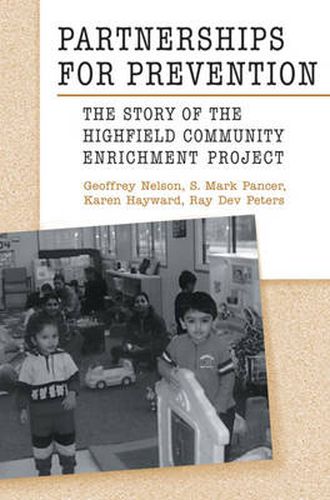Readings Newsletter
Become a Readings Member to make your shopping experience even easier.
Sign in or sign up for free!
You’re not far away from qualifying for FREE standard shipping within Australia
You’ve qualified for FREE standard shipping within Australia
The cart is loading…






The Highfield Community Enrichment Project is one of eight demonstration sites for the ‘Better Beginnings, Better Futures’ initiative, a comprehensive, community-driven program dedicated to the prevention of children’s mental health problems in Ontario and the promotion of child, family, and community wellness. Drawing from this multi-method, longitudinal research project, authors Geoffrey Nelson, S. Mark Pancer, Karen Hayward, and Ray DeV. Peters have written Partnerships for Prevention, providing insights and lessons on how prevention programs can be planned, implemented, and managed in a low-income, multicultural context with a high degree of community involvement.
The authors demonstrate not just that the program works, but how it works, and in so doing make a contribution to theory, research, and practice in primary prevention and mental health promotion for children. Partnerships for Prevention provides a great deal of knowledge that will be of interest and use to policy-makers, program planners, practitioners, and community residents, who wish to create prevention programs.
$9.00 standard shipping within Australia
FREE standard shipping within Australia for orders over $100.00
Express & International shipping calculated at checkout
The Highfield Community Enrichment Project is one of eight demonstration sites for the ‘Better Beginnings, Better Futures’ initiative, a comprehensive, community-driven program dedicated to the prevention of children’s mental health problems in Ontario and the promotion of child, family, and community wellness. Drawing from this multi-method, longitudinal research project, authors Geoffrey Nelson, S. Mark Pancer, Karen Hayward, and Ray DeV. Peters have written Partnerships for Prevention, providing insights and lessons on how prevention programs can be planned, implemented, and managed in a low-income, multicultural context with a high degree of community involvement.
The authors demonstrate not just that the program works, but how it works, and in so doing make a contribution to theory, research, and practice in primary prevention and mental health promotion for children. Partnerships for Prevention provides a great deal of knowledge that will be of interest and use to policy-makers, program planners, practitioners, and community residents, who wish to create prevention programs.